
The AFR has produced an interesting editorial today arguing that the Global Financial Crisis (GFC) adjustment was not avoided by Australia, but merely delayed:
Five years ago this week, the Rudd government launched its first round of stimulus spending designed to pre-empt a return of the Great Depression…
Australia escaped Mr Swan’s forecast recession thanks to his initial $10.4 billion cash splash (which held up Christmas spending confidence), his decisive shoring up of the banks, further Reserve Bank rate cuts, the sharply lower dollar and, most of all, the mother of all stimulus packages from China…
China may have shielded Australia from the initial blast of the crisis. But, five years on, we are being forced to belatedly adjust to an inflated mining boom cost structure.
…the high dollar is squeezing much of the trade-exposed economy. China, India and other developing economies that helped Australia through the crisis five years ago have come off the boil.
…the economy is set for two or three years of sub-par growth. That’s likely to drive the jobless rate higher than its GFC peak.
…we’re left with a high wage and inflexible workforce and a welfare mentality that the reliance on low-rent spending stimulus may have even encouraged.
It is difficult to deny that Australia’s economic performance has been exemplary when compared against other’s poor fortune. Whereas real GDP per capita in most other developed economies contracted over the five years since the onset of the GFC, Australia at least managed to record positive growth, even if it has been rather anaemic (see next chart).
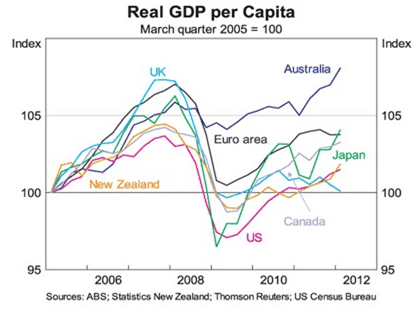
Indeed, Australia’s recovery from the GFC slowdown has been significantly weaker than the past three recessions, when measured on a per capita basis. According to the ABS’ trend measure, Australia’s GDP per capita is only 3.8% above its pre-GFC level (June 2008). This rate of recovery is well below that of the mid-1970s, early-1980s, and early-1990s recessions at the same point in the cycle (see next chart).
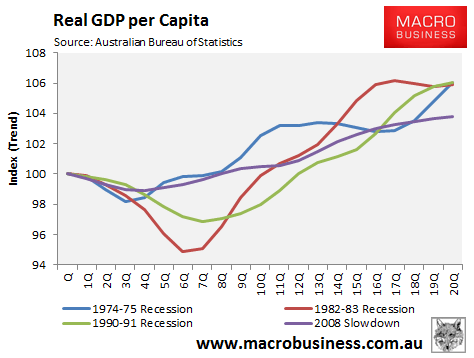
It also appears that Australia’s post mining adjustment has just begun.
First, after rising to 140-year highs, commodity prices and the terms-of-trade are still more than 50% above their long-run average level and likely have a long way further to fall (see next chart).
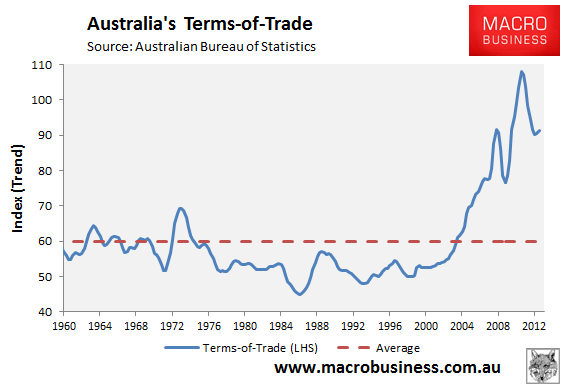
Perhaps more importantly, the once-in-a-century mining investment boom is about to unwind, which is likely to detract significantly from both jobs and growth (see next chart).
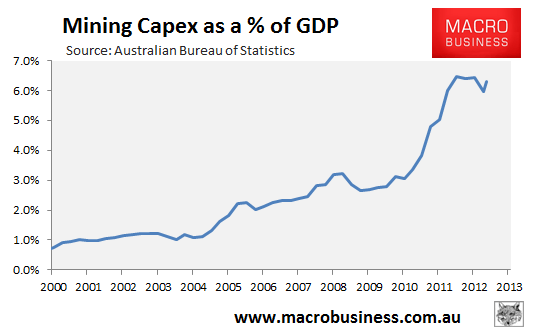
Of course, Australia’s authorities are hoping that housing construction will lift to fill the void left by mining. But this view seems highly unrealistic given the sheer size of mining investment (represented by engineering construction below) relative to building construction (both residential and non-residential):
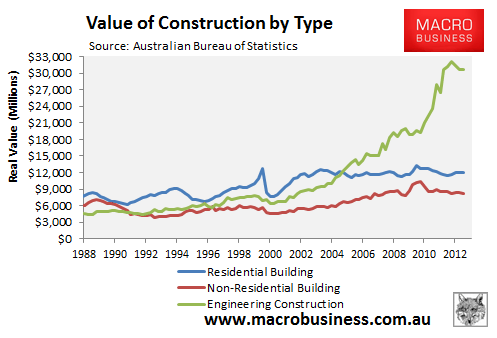
In the meantime, we have an economy where the jobless rate is drifting up slowly and full-time employment growth is falling (see next chart).
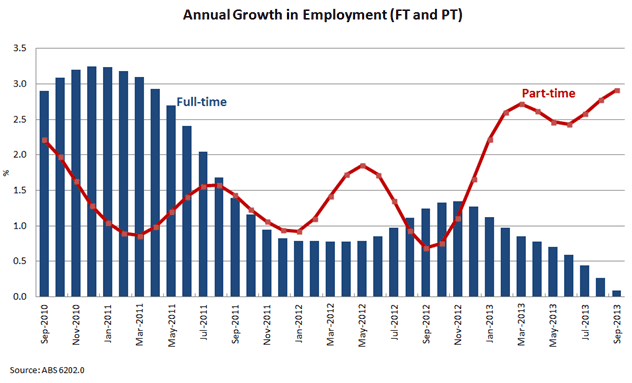
Make no mistake, Australia’s post GFC adjustment has arrived. Only at this stage, it appears to be more of a long, slow grinding kind, which risks accelerating in the event that mining investment and/or commodity prices fall more quickly than expected.

